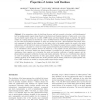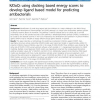80 search results - page 2 / 16 » Ensemble of Linear Models for Predicting Drug Properties |
BIOSYSTEMS
2008
13 years 5 months ago
2008
The responses of cortical neurons are often characterized by measuring their spectro-temporal receptive fields (strfs). The strf of a cell can be thought of as a representation of...
JCC
2007
13 years 5 months ago
2007
: It has tremendous values for both drug discovery and basic research to develop a solid bioinformatical tool for guiding peptide reagent design. Based on the physical and chemical...
KDD
2010
ACM
13 years 9 months ago
2010
ACM
We analyze the application of ensemble learning to recommender systems on the Netflix Prize dataset. For our analysis we use a set of diverse state-of-the-art collaborative filt...
BMCBI
2008
13 years 5 months ago
2008
Background: A major obstacle in treatment of HIV is the ability of the virus to mutate rapidly into drug-resistant variants. A method for predicting the susceptibility of mutated ...
BMCBI
2010
2010
KiDoQ: using docking based energy scores to develop ligand based model for predicting antibacterials
13 years 5 months ago
Background: Identification of novel drug targets and their inhibitors is a major challenge in the field of drug designing and development. Diaminopimelic acid (DAP) pathway is a u...


